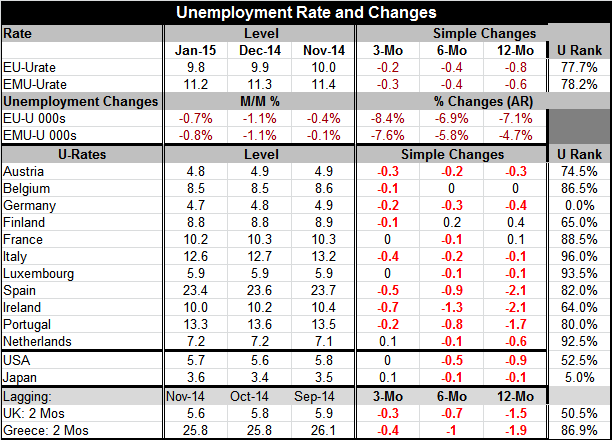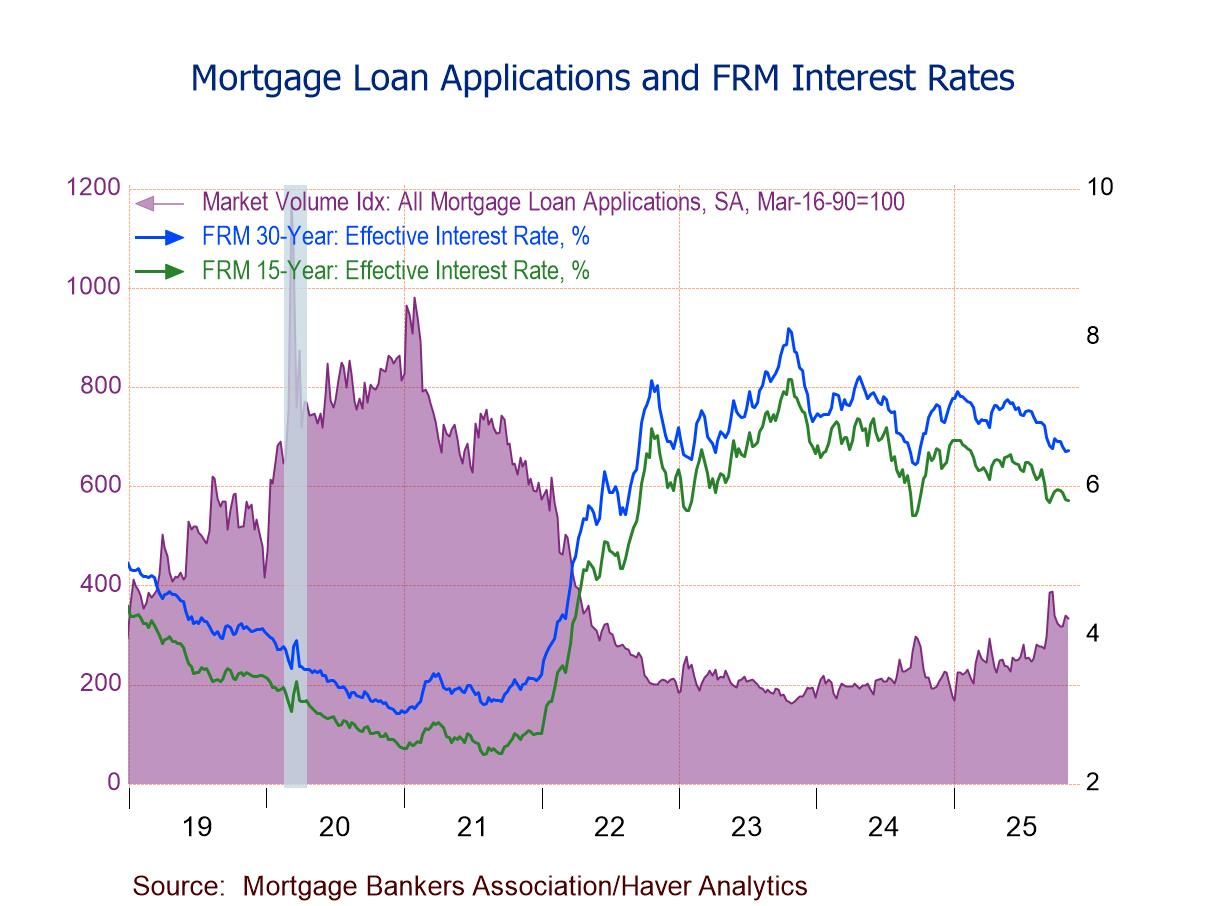 Global| Mar 02 2015
Global| Mar 02 2015European Unemployment Rates Show More Widespread Declines
Summary
European unemployment rates show more pervasive declines in January. Seven of these 11 early EMU reporters show unemployment rates lower in January 2015 compared to December 2014. Eight show rates net lower over three months. Nine [...]
 European unemployment rates show more pervasive declines in January. Seven of these 11 early EMU reporters show unemployment rates lower in January 2015 compared to December 2014. Eight show rates net lower over three months. Nine have rates net lower over six months. Eight are net lower over 12 mnths. Unemployment rates in Finland and France alone are higher over 12 months.
European unemployment rates show more pervasive declines in January. Seven of these 11 early EMU reporters show unemployment rates lower in January 2015 compared to December 2014. Eight show rates net lower over three months. Nine have rates net lower over six months. Eight are net lower over 12 mnths. Unemployment rates in Finland and France alone are higher over 12 months.
The number unemployed has been falling with the EMU ranks of unemployed lower by 4.7% over 12 months and EU unemployment numbers lower by 7.1% over 12 months. Over 12 months the unemployment rate in the EU has fallen by 0.8 percentage points while in the EMU over 12 months the rate has fallen by 0.6 percentage points.
For both the EU and the EMU the respective unemployment rates are high, standing in about the top 12% of their respective historic queues of unemployment rates (higher only 12% of the time).
Although EMU unemployment has fallen on balance over 12 months and is falling across the zone and in the EU, the pace of unemployment declines is still very slow and the unemployment rates are high despite their slow erosion.
For example, among the 11 early unemployment rate reporters in the EMU, Germany has the best relative standing with its unemployment rate at an all-time low since 1998. Ireland's unemployment rate stands in is 64th queue percentile on that horizon, Finland stands in its 65th percentile, and Austria stands in its 75th percentile. All the rest of the early EMU reporters stand in their respective 80th percentiles or higher. That means for most of these countries unemployment has been higher 20% only of the time or less. These are still high rates of unemployment by historic experience and they are lingering.
The highest unemployment rates relative to historic experience are in Italy, Luxembourg and the Netherlands; all of whom possess respective percentile standings in their 90th percentile or higher (higher 10% of the time historically, or less). The highest absolute rates of unemployment are in Spain, Portugal, Italy, France and Ireland- all of which have rates in double digits. Ireland's rate is just barely in double-digits at 10.0% and Spain's is at 23.4%. We also need to include Greece whose data releases dates lag other EMU members but whose unemployment rate as last reported is the highest in the euro area at over 25%.
The unemployment rates are falling fastest in the states with the highest rates of unemployment. That is a good development. But there is still a long way to go.
For now the EMU is making progress. Even Greece is making progress. But a lot more is needed and in Greece there are several important policy hurdles on the horizon. Greece is running out of money and appears to have a cash flow crisis before any new funds injection is due. The EMU, despite its progress, continues to live in interesting times.

Robert Brusca
AuthorMore in Author Profile »Robert A. Brusca is Chief Economist of Fact and Opinion Economics, a consulting firm he founded in Manhattan. He has been an economist on Wall Street for over 25 years. He has visited central banking and large institutional clients in over 30 countries in his career as an economist. Mr. Brusca was a Divisional Research Chief at the Federal Reserve Bank of NY (Chief of the International Financial markets Division), a Fed Watcher at Irving Trust and Chief Economist at Nikko Securities International. He is widely quoted and appears in various media. Mr. Brusca holds an MA and Ph.D. in economics from Michigan State University and a BA in Economics from the University of Michigan. His research pursues his strong interests in non aligned policy economics as well as international economics. FAO Economics’ research targets investors to assist them in making better investment decisions in stocks, bonds and in a variety of international assets. The company does not manage money and has no conflicts in giving economic advice.






